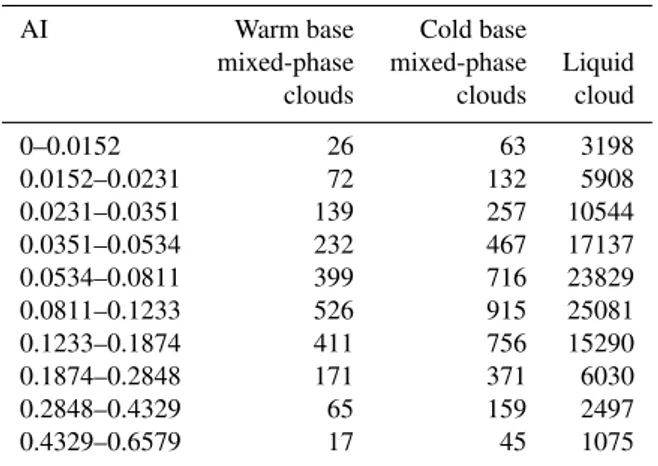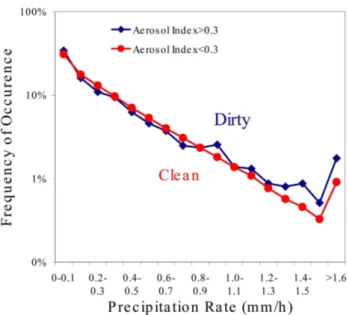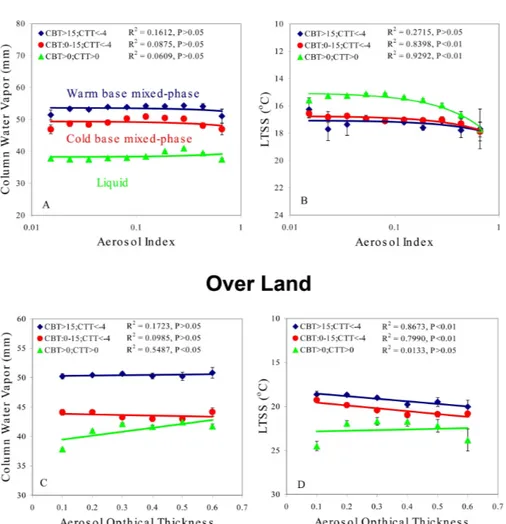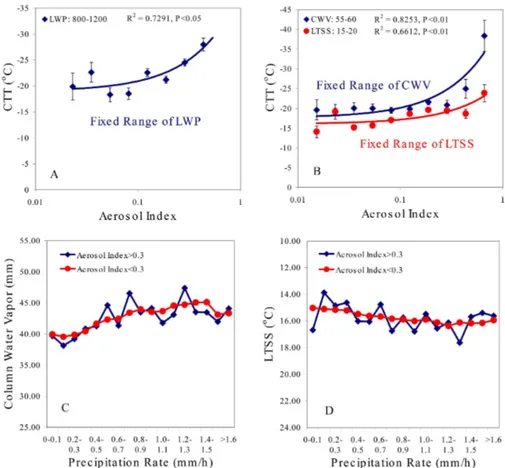Systematic variations of cloud top temperature and precipitation rate with aerosols over the global tropics
Texto
Imagem




Documentos relacionados
In that paper, several cloud fields with the same stochastic properties as real clouds are generated assuming variable cloud tops, vertical profile of water droplet, mixed phase,
Therefore it is useful to utilize the available archive of ship-based AOD measurements over the oceans ac- quired within the framework of Maritime Aerosol Network (Smirnov et
The comparison of aerosol optical depth (AOD) from HAC against MODIS shows larger HAC AOD values over regions with higher aerosol loads and smaller HAC AOD values than MODIS for
C.: Improvement of aerosol optical depth retrieval from MODIS spectral reflectance over the global ocean using new aerosol models archived from 30. AERONET inversion data and
C.: Improvement of aerosol optical depth retrieval from MODIS spectral reflectance over the global ocean using new aerosol models archived from AERONET inversion data and
The results strengthen the case that the observed increase in cloud top height and cloud fraction associated with higher aerosol loadings in convective clouds over the Atlantic ITCZ
The well- predicted aerosol quantities, such as aerosol number, mass composition and optical properties, and the inclusion of full aerosol-cloud couplings lead to
For the moderately dense Sa- hara dust layers detected in the CALIOP data used in this study, the mean/median values of the lidar ratios derived from a constrained opaque water
